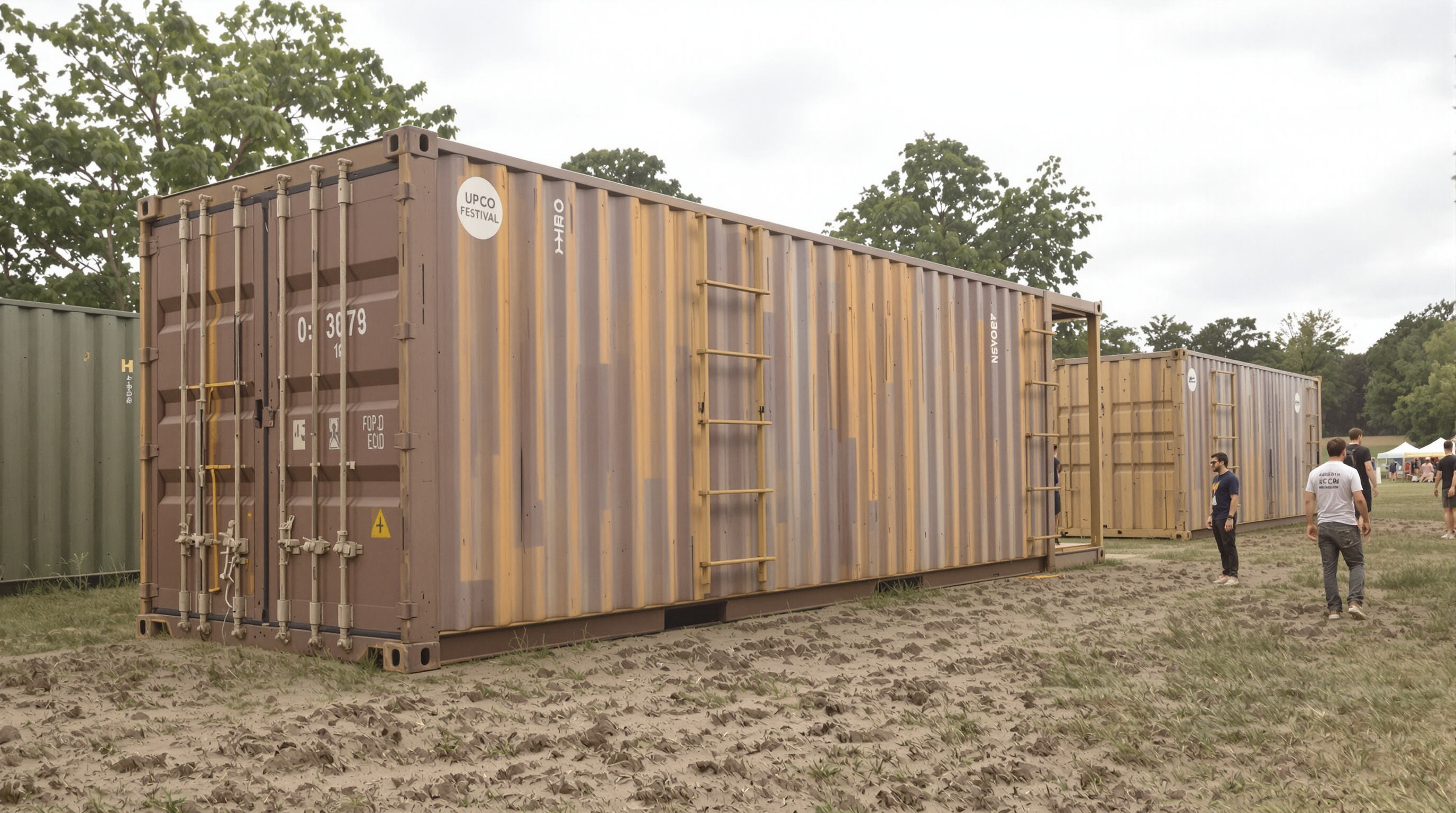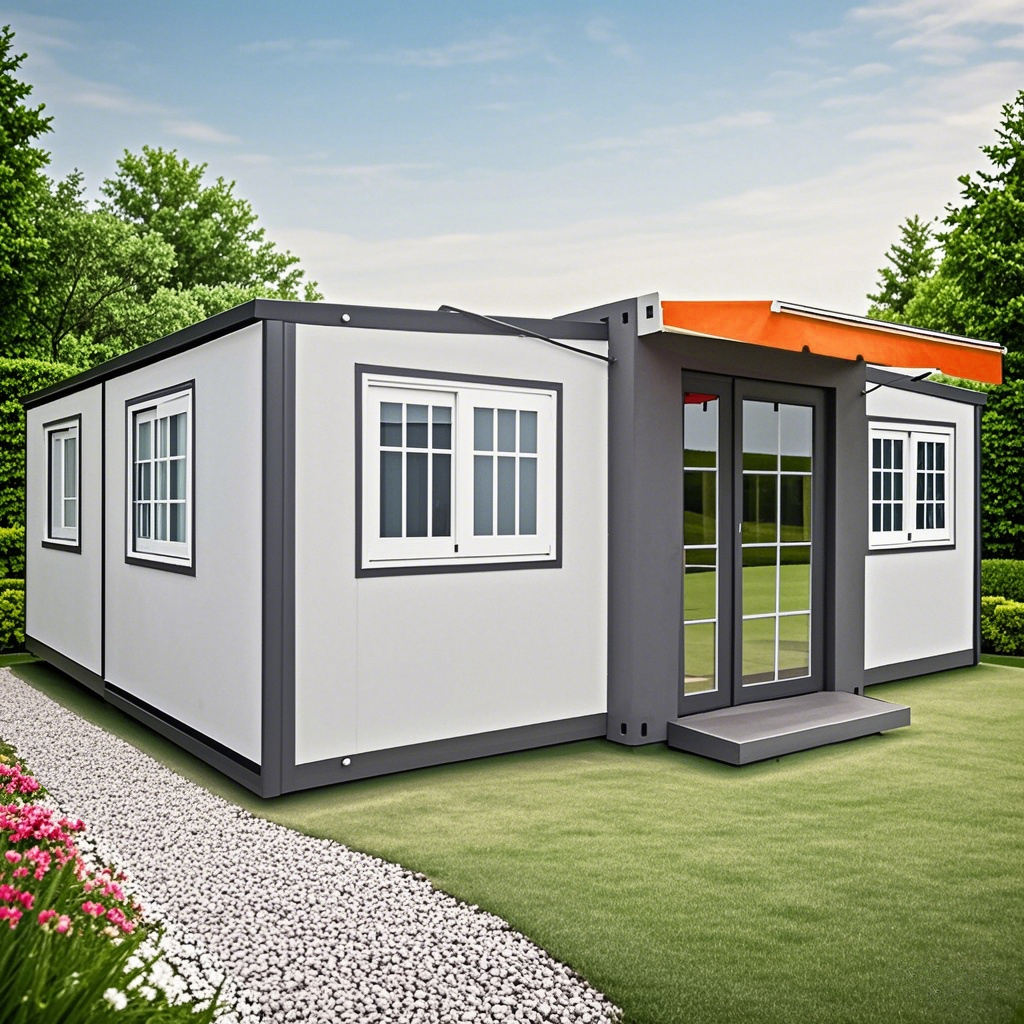Sustainable Infrastructure: How Container Homes Reduce Festival Environmental Impact

Eco-friendly festival infrastructure through container repurposing
When old shipping containers get transformed into festival structures, each 40 foot container keeps about 3,500 kg of steel out of landfills and cuts down around 12,000 kg of CO2 emissions compared to building from scratch according to that report from 2023 on container housing. These containers are pretty sturdy too, so most festivals don't need concrete bases at all. The data shows this works for roughly 78 percent of temporary setups, just putting them on packed earth will do. And looking at recycling numbers, something interesting happens here. From what the same 2023 report found, nearly 92% of these modified containers can still be recycled once they're done serving their purpose. That beats the pants off regular wooden festival stalls which only manage about 34% recyclability. Makes sense when you think about it really.
Carbon footprint reduction via adaptive reuse of shipping containers
Studies indicate that venues made from shipping containers create around 63 percent less embodied carbon compared to buildings constructed with brand new materials. When we talk about individual containers being reused instead of producing fresh steel, each one saves roughly 7.2 tons of virgin steel manufacturing. That's about what 24 fully grown trees can absorb in a year worth of carbon dioxide. The modular nature of these structures allows for about 87% reuse between different events, which cuts down on the massive 40% waste problem that plagues traditional temporary construction projects. Event planners are increasingly recognizing this advantage as they look for ways to cut costs while also meeting sustainability goals in their operations.
Greenwashing vs. genuine sustainability: Evaluating the environmental claims of container architecture
About two thirds of festivals claim containers are part of their green strategy, but when auditors actually check, less than a third really hit those circular economy targets. What's missing? A lot actually. Most venues still haven't upgraded their insulation materials to something safe for people and the planet (around 8 out of 10 fail this test). Only about half have properly installed solar ready wiring systems, and barely over 40% follow proper procedures for breaking down containers after events. The new 2023 Green Building Initiative guidelines demand serious improvements though. They want at least 90% recycled materials used and require collecting rainwater right where it falls. Certifications such as Cradle to Cradle Silver are becoming increasingly important too. These third party checks give festival organizers something concrete to aim for instead of just making vague environmental promises they can't back up.
Modular Design and Rapid Deployment for Time-Sensitive Festival Logistics

Flexible Spatial Planning with Modular Container Event Structures
Container architecture is becoming popular among festival organizers because it offers great flexibility in space usage. The standard sizes make it easy to rearrange containers into different configurations like ticket booths, exclusive areas for VIP guests, or even temporary stages for performances. These containers come with built-in connection points that let organizers mix and match sections based on how people move through the venue, what the ground looks like, or when they need to change plans at the last minute. Nothing beats this kind of adaptability when compared to fixed buildings. According to a recent report from Event Sustainability in 2023, using these modular containers cuts down on waste materials by about 38% over traditional temporary setups. Plus, they hold up well outdoors despite all sorts of weather conditions.
Quick-Setup Capabilities of Container Venues for Fast Festival Turnaround
Container based venues come together about 60 percent quicker compared to those old school tent and scaffold setups. People can actually start using them just a few hours after they arrive on site. The whole thing gets easier because of those ready made electrical runs and plumbing channels already built in, plus all that insulation comes pre installed too. Take major music festivals for instance these days. They finish loading their equipment into containerized spaces around four days sooner than before. That means big savings on labor bills and less hassle getting everything ready at festival sites. And speaking of putting things together, those interlocking corners and standard bolts make it possible to build securely without needing special technicians standing by every step of the way.
Stackability and Space Efficiency in Temporary Event Layouts
Stacking vertically can triple the amount of usable area at tight festival locations where space is limited. With three levels stacked on top of each other, organizers get elevated viewing areas, safe storage spaces, and dedicated spots for staff all without needing extra room on the ground. When it comes time to pack everything up, these modular units nest together so they take up about 45 percent less space in transport trucks than traditional temporary setups would. That makes a big difference when moving equipment between multiple festival venues across different cities. The carefully designed sizes also mean vendors can fit more stalls and attractions closer together while still keeping walkways wide enough to meet accessibility requirements for everyone attending.
Versatile Applications: Transforming Container Homes into Festival Experience Hubs
Customized container bars, stages, lounges, and ticket booths
These days, container homes have become pretty much essential for creating those branded festival vibes everyone loves. Take one standard 40 foot shipping container and suddenly it's transformed into something amazing like a full circle cocktail bar complete with built in fridges, or even better, a fancy two story VIP area where temperature stays just right and no outside noise gets through. The way these containers work is pretty cool too. They let organizers cut out sections to make those walk up windows at ticket counters, and the strong frames hold up all sorts of things including stages that host massive sound systems pumping out over 5,000 watts of power. According to latest numbers from the Festival Design folks, around two thirds of big festivals nowadays rely on container structures for at least three important parts of their setup. Makes sense really when you think about how versatile they are.
Mobile and detachable units for dynamic, evolving festival designs
- Rapid reconfiguration: Clusters of 8–12 containers can transform from a 1,200 sq ft food court to a 900-capacity EDM stage between event days
- Hybrid functionality: 20% of container venues feature detachable roofs or walls, enabling conversion from enclosed spaces to open-air plazas
- Transport efficiency: Standardized dimensions allow three times faster load-in and load-out than traditional temporary structures (Event Safety Journal 2023)
Enhancing attendee experience through innovative container-based spatial design
When containers are placed strategically throughout an area, people tend to move through spaces much better, cutting down on those annoying congestion points by around 40%, according to Live Design International's research. Stacking them vertically, maybe two or three units high, actually helps create these eye-catching landmarks for attendees. And when they connect different units together, it forms nice shaded paths that also happen to look pretty cool, almost like temporary art pieces scattered around. From what thermal tests have shown, containers with good insulation can keep inside temperatures at a comfortable 72 degrees even when it's sweltering outside at 90 degrees. Plus, they do this while consuming only about 30% of the energy needed for traditional tents, which makes a real difference over time.
Durability and Security Advantages of Steel Container Venues in Outdoor Events
Weather Resistance and Structural Durability of Container Homes at Festivals
Steel shipping containers are really tough stuff. The corrugated walls plus corten steel that resists rust can handle pretty much anything nature throws at them. According to a durability test back in 2023, these containers stay intact even when winds blow over 90 miles per hour and temps swing between minus 22 degrees Fahrenheit all the way up to 120 degrees F. That kind of toughness makes them great for those long lasting outdoor events that go on for days. What's more, the welding on these containers is so tight that water just can't get in during bad weather. And the special reflective coating on top cuts down on heat inside by about a third compared to regular temporary buildings, according to research published by Event Safety Alliance in their 2022 report.
Built-In Security for Equipment and Inventory Storage in Steel Containers
Steel built for industry gives these repurposed containers serious resistance against theft. Most come with standard ISO lock boxes that work well with heavy duty padlocks, though some models now offer biometric access options too. Looking at actual festival operations, event organizers who switch to container storage report losing around 82 percent less equipment compared to when they used traditional tent setups. For events needing climate control, there are dual wall insulated versions available that keep humidity steady between 45 and 55 percent relative humidity. This helps protect delicate AV equipment from morning condensation issues that often plague open-air storage solutions.
Key Security Features of Festival Container Units
| Feature | Traditional Tents | Steel Containers |
|---|---|---|
| Forced entry resistance | 2 minutes | 18+ minutes |
| Weatherproofing | Limited | IP66 certified |
| Anchor system options | 4 | 11 |
FAQs
Why are shipping containers considered eco-friendly for festivals?
Shipping containers, when reused for festival infrastructures, significantly reduce steel waste and carbon emissions. Each container can keep about 3,500 kg of steel out of landfills and cut down around 12,000 kg of CO2 emissions.
Can shipping containers be recycled after use at festivals?
Yes, nearly 92% of modified shipping containers can be recycled once they no longer serve their purpose, which is much higher compared to traditional wooden festival stalls.
How do shipping containers help reduce the carbon footprint at festivals?
Shipping container venues create around 63% less embodied carbon compared to new material constructions. The reuse of individual containers saves roughly 7.2 tons of virgin steel manufacturing per unit.
Are all festivals effectively implementing container-based green strategies?
While about two-thirds of festivals claim to use containers as part of their green strategy, fewer than a third meet actual sustainability and circular economy targets due to factors such as outdated insulation and improper break-down procedures.
What are the security benefits of using steel containers over traditional tents?
Steel containers offer enhanced security features, such as a forced entry resistance of over 18 minutes, compared to just 2 minutes for traditional tents. They also provide IP66 certified weatherproofing and more reliable anchor systems.
Table of Contents
- Sustainable Infrastructure: How Container Homes Reduce Festival Environmental Impact
- Modular Design and Rapid Deployment for Time-Sensitive Festival Logistics
- Versatile Applications: Transforming Container Homes into Festival Experience Hubs
- Durability and Security Advantages of Steel Container Venues in Outdoor Events
-
FAQs
- Why are shipping containers considered eco-friendly for festivals?
- Can shipping containers be recycled after use at festivals?
- How do shipping containers help reduce the carbon footprint at festivals?
- Are all festivals effectively implementing container-based green strategies?
- What are the security benefits of using steel containers over traditional tents?

